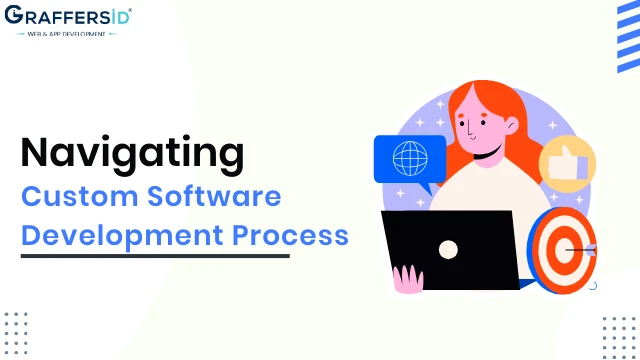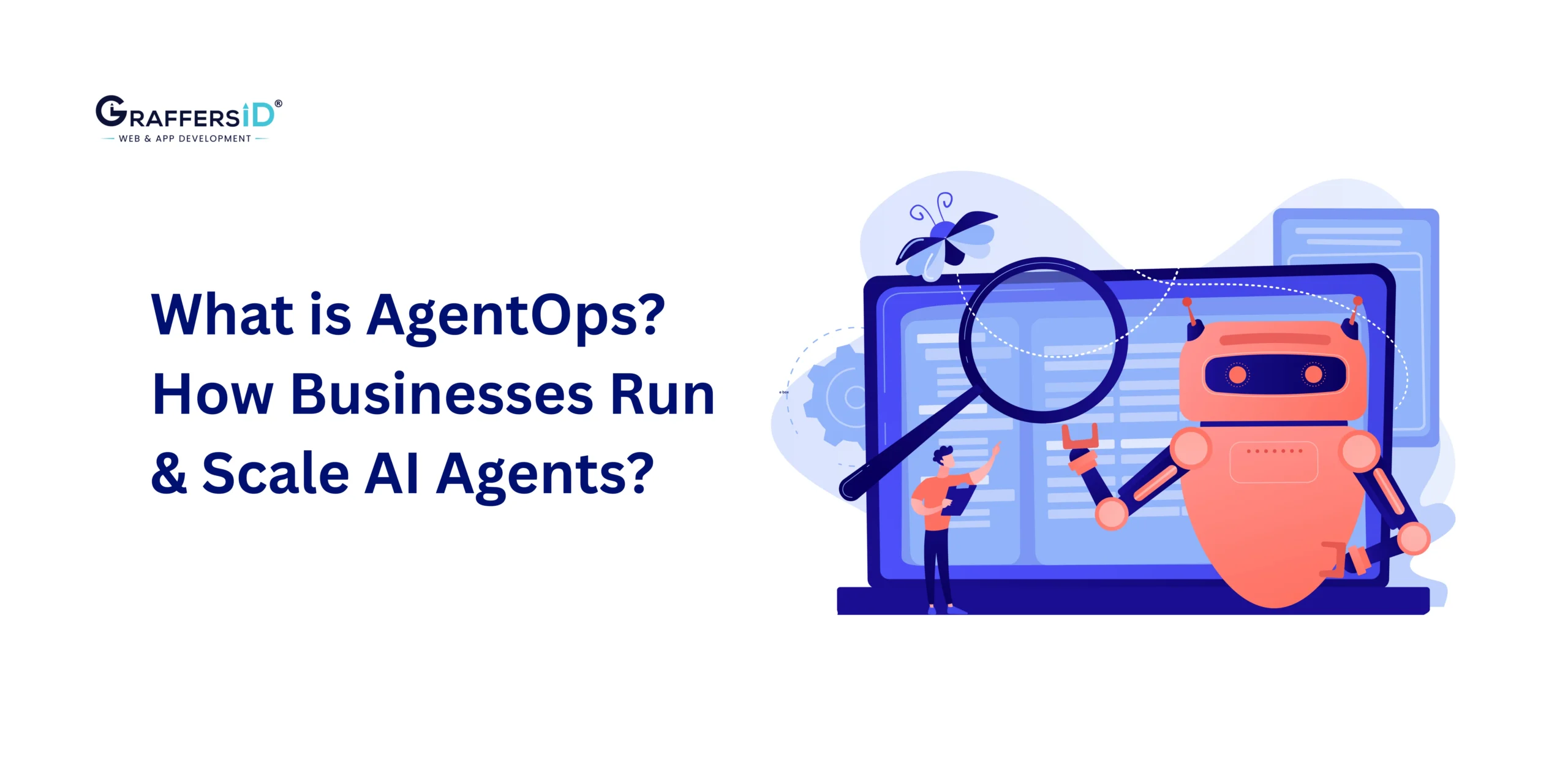Making your way through the intricate world of custom software development is like setting out on a strategic mission. This process consists of several clearly defined processes, each essential to providing a customized solution that supports your company’s goals. Let’s start at the beginning of this transformative adventure.
Understanding the Need for Custom Software
Understanding why off-the-shelf solutions might not work is essential before diving into custom software. The foundation of this expertise is the ability to recognize particular company needs. It involves more than just solving immediate problems; it also entails thinking of scalable solutions that custom software developers may create with your company.
Identifying Business Needs
An in-depth analysis of your company operations is the initial step. Which obstacles prevent efficiency? Do any voids exist in communication? Identifying these problems provides the groundwork for a tailored solution that takes your particular issues head-on.
The Role of Stakeholder Collaboration
Working well together with important stakeholders is essential. This covers not just senior management but also end users who will utilize the program daily. Their viewpoints are crucial and ensure that the produced solution aligns with the practical nuances of day-to-day operations.
Planning and Design
The planning and design phase begins as soon as the needs are apparent. This thorough process establishes the foundation for development; it goes beyond simply drawing out the look of the software.
Requirements Assembling
Carefully compiling criteria necessitates a thorough understanding of your business demands. This entails describing the attributes, capabilities, and any particular integrations required for smooth functioning.
Prototyping and Design
Through prototyping, you may see the software in operation. Before full-scale development starts, stakeholders can offer comments thanks to this concrete depiction. The result will roughly match expectations thanks to this iterative procedure.
Architecture and Technology Selection
Selecting the materials for your dream home is similar to choosing the appropriate architectural and technology stack. Opting for a microservices architecture, such as with Node.js and Docker, ensures flexibility and easy maintenance. For scalability, integrating cloud solutions like AWS or Azure is crucial. This thoughtful selection guarantees your software’s endurance, much like a well-constructed, resilient dream home.
Development Phase
Equipped with a detailed blueprint, the coding and programming phase assumes a central role, signaling the beginning of your software project. Here is where knowledgeable programmers apply their skills to create the complex code that serves as the basis for your custom solution.
Coding and Programming
After obtaining a blueprint, the real work of coding and programming starts. This is where the intended software begins to take shape. Skilled programmers start writing the complex code that will serve as the foundation for your custom solution.
Agile Methodologies
Using agile approaches is like having a well-oiled machine in the fast-paced world of custom software. It guarantees adaptability, teamwork, and an ongoing feedback loop. Iterative progress is possible with agile development, quickly allowing modifications and improvements.
Testing and Quality Assurance
Without thorough testing, no piece of software is complete. Quality assurance is the benchmark for confirming that the created solution precisely complies with the specified standards. Testing entails assessing performance, security, and user experience and finding and resolving faults.
Deployment and Implementation
Strategic planning for the software’s introduction to the user base is part of the deployment process. The intricacy of the software and the company’s particular requirements determine the different deployment tactics. A well-planned approach reduces disturbances during implementation, whether it is a full rollout or a staggered deployment.
Training and Support
Training users and providing continuous support are essential when introducing a new software solution. In addition to a user-friendly interface, offering resources, documentation, and quick support channels guarantees a seamless transition and encourages user adoption.
Post-Implementation Maintenance and Upgrades
Deployment is not the end of the journey. Updating, maintaining, and upgrading software regularly is essential to keep it reliable and in line with changing business requirements. Consistent evaluations of performance, security updates, and feature additions support the bespoke solution’s long-term viability.
Understanding your business needs
To begin developing a custom software solution for your business, it’s important to understand the business needs. This means understanding the goals and objectives of the business, as well as its current state. You should also be aware of any competition that may exist in your area or industry (or both). The customer base can have an impact on what features are needed for consumers to be attracted by them and if there aren’t any competitors out there yet, then you might want to consider why not!
The process of developing custom software is more complicated than writing code on your own. It involves collaboration, communication, and a shared vision of what the product will look like when it’s finished. Whether you’re building an app for your business or just trying to create something fun for yourself, this guide will help walk you through each stage of custom software development so that you’ll know what to expect from start to finish.
Several legal requirements might affect how we build out our software: Does this company need to be PCI compliant? Do they require HIPAA compliance? These types of questions will help us determine whether or not certain features must be included for us to meet those requirements before we even start working on anything else.
Technical requirements include things like platform support (mobile vs desktop), development language(s), hosting environment, etc., which will help guide our decisions throughout the development process
Risk assessment and mitigation strategies
The next step in the software development process is to identify and mitigate risks. You can do this by creating a risk assessment plan, which will help you understand the importance of risk assessment in your project.
Risks are anything that could negatively impact your business objectives, such as missed deadlines or budget overruns. By identifying these potential problems early on in a project, you’re able to take steps toward mitigating them before they become issues and ultimately cost time or money down the line.
Some examples of common risks include:
- A lack of communication between stakeholders (this could cause delays)
- Changes made by one party without informing others (this could lead to errors)
Selecting a reputable development company
When it comes to custom software development, there are several things you should look for in a company. Some of these include:
- A proven track record. You’ll want to work with a company that has experience building similar products and has completed projects that align with your goals and objectives.
- Your industry expertise. If you’re working on an eCommerce site or app, make sure the development team knows how to create things like checkout processes, payment gateways, inventory management systems, the list goes on and on!
- A good reputation among peers (and customers). Make sure you ask around before committing any resources to a particular firm so that everyone’s expectations are clear from the beginning; otherwise, things could get messy later down the line when issues arise unexpectedly due to miscommunication between parties involved in project delivery.”
Ensuring a seamless and intuitive user experience
A good user experience is one of the most important aspects to consider during the software development process. A seamless and intuitive user experience can make or break an application, so you must consider how your users will interact with your product.
What do we mean by “seamless”? A seamless experience means that there are no visible gaps between steps within the app, which allows users to easily navigate through various features without feeling confused or frustrated. For example, if a user clicks on something in an app and then nothing happens for several seconds (or minutes!), they might think they did something wrong or that their device isn’t functioning properly, which could lead them away from using other features as well!
When designing software systems with multiple functionalities, it’s important not only that each feature works correctly but also that these interact together as part of one cohesive whole; otherwise known as “intuitive” design principles.
Addressing challenges and changes during development
Any project is going to encounter challenges and changes. The best way to address these is by developing a plan that allows you to stay on track, even when things don’t go as planned.
One tool you can use for this is discovery-driven development (DDD). DDD uses the principles of Agile software development but takes them further by focusing on the business value of your product rather than just the technical details. This helps ensure that your team isn’t distracted by features that aren’t relevant or important for your users which means less time wasted getting things done!
Another helpful tool for managing change is iteration: building on what works well while constantly refining what doesn’t work so well until it does fit perfectly into place with all other elements in play at any given moment in time during the development process.”
Strategies for a smooth deployment
- A smooth deployment is critical to the success of your project. You want to ensure that your custom software is easy to install and maintain so that your users can be up and running as quickly as possible.
- Ongoing support and maintenance are also important. You’ll want someone on hand who understands how your system works to fix bugs and help with any issues that arise down the road.
- Your users should have an intuitive user experience (UX), which means having an interface that’s easy for them to understand and use effectively without much training or instruction from you or anyone else on staff.
- Careful planning and execution will ensure a seamless experience for both developers working on this project and end users interacting with it once it’s live in production mode.*
Importance of ongoing support and maintenance
Once you have your custom software, you should be thinking about how to keep it up-to-date. This is where ongoing support and maintenance come into play.
If you are considering developing a system yourself or with a team of developers, you must have experience with the maintenance side of things. They should be able to provide references and case studies showing their ability in this area.
Additionally, look for an individual who has worked on similar projects, as it will give them more insight into what works best for your needs, as well as make them more aware of potential issues before they arise
Real-world examples of successful custom software development projects
When you consider the benefits of custom software development and the process to successfully navigate it, it’s clear that there are many reasons to consider this option over off-the-shelf or web-based solutions.
Custom software development provides organizations with an opportunity to build a solution that is tailored directly to their unique needs and challenges. This means that you can create an application that works for your business, rather than trying to fit into an existing system or relying on someone else’s idea of what would work best for your organization.
If you’re considering whether custom software development might be right for your company, here are some examples of successful projects.
1. Netflix:
Background: As the undisputed leader in the streaming industry, Netflix owes much of its success to its intricate recommendation algorithm. The platform’s ability to suggest content tailored to individual user preferences is a result of robust custom software development.
Custom Solution: Netflix employs a sophisticated recommendation engine that analyzes user behavior, viewing history, and preferences. This custom software enables Netflix to offer a personalized user experience, keeping subscribers engaged and satisfied.
Outcome: Netflix’s custom software has played a pivotal role in transforming the way people consume entertainment, contributing significantly to its massive user base and global success.
2. Salesforce:
Background: Salesforce is synonymous with Customer Relationship Management (CRM) software, but its journey to success began with a unique vision of cloud-based, customizable CRM solutions.
Custom Solution: Salesforce’s custom software allows businesses to build and tailor their CRM systems according to their specific needs. The platform’s success lies in its adaptability, enabling organizations to streamline processes and enhance customer interactions.
Outcome: Salesforce’s custom software development approach has revolutionized how companies manage customer relationships, resulting in widespread adoption across industries and business scales.
3. SpaceX:
Background: SpaceX, founded by Elon Musk, has disrupted the aerospace industry with its ambitious space exploration missions and reusable rocket technology.
Custom Solution: Custom software plays a crucial role in SpaceX’s mission planning, navigation, and rocket control systems. This bespoke software is tailored to the unique challenges of space travel, ensuring precision and reliability.
Outcome: SpaceX’s reliance on custom software has contributed to numerous successful space missions, including the development of the Falcon and Starship rockets. This approach has set new benchmarks for the aerospace industry.
4. Zappos:
Background: Zappos, an online shoe and clothing retailer, has gained a reputation for its exceptional customer service and seamless e-commerce experience.
Custom Solution: Zappos invested in custom software development to enhance its online shopping platform. This includes personalized recommendations, easy navigation, and a user-friendly interface, making the shopping experience delightful for customers.
Outcome: Zappos’ commitment to custom software has led to high customer satisfaction, repeat business, and increased brand loyalty, proving that tailored solutions can make a significant impact in the competitive e-commerce space.
Conclusion
To successfully navigate this complex landscape, it is essential to select the correct development partner, adopt agile approaches, ensure rigorous testing, and apply deliberate deployment plans. The process creates a game-changing tool that will improve your company’s online presence in addition to providing a bespoke software solution. The custom software development process is a long one, but it’s worth it. The result will be a product that perfectly fits your business needs and helps you reach your goals. As we’ve seen throughout this article, there are many ways to make sure the process goes smoothly from start (or restart) to finish.




